When Susan Hobart first moved into her home on Sengekontacket Pond in Oak Bluffs, she wanted what many homeowners desire: a clean, orderly garden bursting with dinner-plate blooms, ideally maintained by someone else. She soon learned what nature can do to the best-laid plans. “I used to only visit on the weekends,” Hobart explained. “We had planted hostas in the spring and by Memorial Day every single one of these exquisite, large hostas had been eaten.”
The culprit – no surprise to many Vineyard gardeners – was deer. A chronic annoyance in many parts of the country, deer are something of an epidemic on the Island. With no wild predators and relatively warm winters, Martha’s Vineyard is home to a minimum of forty-five specimens per square mile – three to five times the state’s optimal levels. By springtime, their need for fresh produce can drive them into home gardens to feed on anything soft enough to chew.
Although Hobart’s hosta problem was not unique, it was a relatively new challenge for the New Jersey transplant who had never taken much of an interest in gardening. After retiring and moving full-time to the Island, she began to fiddle around with her backyard. “I just got so bored,” she said. “I needed something to do.”

Four years later, she had joined the Martha’s Vineyard Garden Club, and soon after became its president. As her interest in gardening grew, so did her attempts to thwart the creatures who had dampened Memorial Day years ago. “I never bought another hosta,” she said.
A former executive at a consulting firm, Hobart once made a living from problem-solving, and to some extent she brought this methodology into her yard. But her garden was always intended to be a place of respite. She tried to spray her plantings with deer repellent, but was never diligent enough for the method to stick. After going through the back-and-forth many gardeners find themselves in when trying to deter pests, she decided to let nature do the work for her. She enlisted landscaper Jennie Slossberg, owner of Garden Angels, to help trade her tulips for heartier native shrubs. Over time, she filled the space with almost entirely deer-resistant plants, the textures turning fuzzy, spiny, and prickly in the name of self-defense.
“Think of it like a salad bar,” Hobart said of the lessons learned with Slossberg’s counsel. “If you would want to eat it at a salad bar, anything soft or smooth, they’ll eat.”
While a yard full of cacti would do the trick, Hobart found a variety of more local, non-succulent plants that fit within those parameters, many of which still gave her the abundant flowering look she initially envisioned. In-season, spiny-centered coneflowers, coarse-textured black-eyed Susans, and nepetella now burst forth from her beds facing a glittering Sengekontacket Pond. Nepetella, also known as lesser catmint, is a perennial herb with a clean, mint-lemon scent when you crush the leaves between your fingers, Hobart said, illustrating with a few in her hand. The entire Nepeta genus, which houses all catnip varieties, is deer resistant due to its strong scent, which deer dislike.

She pointed to another bush of charming yellow flowers and scallop-shaped leaves. Called lady’s mantle, Alchemilla mollis or Alchemilla vulgaris, it’s an easy-going perennial whose soft, hair-covered leaves remain semi-evergreen through winter. One bed over, mint-scented bee balm, sometimes known as bergamot, pulled double-duty as a boon for pollinators. True to its name, the bush was alive with cheerful buzzing.
The logic behind planting deer-resistant gardens is uncomplicated. In addition to plants with rough and prickly textures or an abundance of sap, deer tend to avoid plants that have strong odors, such as many herbs and peonies. They also avoid plants with poisonous compounds, such as daffodils, foxgloves, and poppies. Polly Hill Arboretum in West Tisbury keeps a handy list of deer-resistant species in their online plant directory, Hobart added, to help take away any guesswork.
With populations gradually increasing by 0.5 deer per square mile a year, gardening choices can affect how often you find a deer in your own backyard, said Martin Feehan, the deer and moose project leader with the Massachusetts Division of Fisheries and Wildlife. His primary advice: “Make sure you’re not intentionally planting plants that are major food sources: apples, raspberries, maples, or things like that.”
Feehan cautions that it is possible to make your garden too inhospitable. Although deer don’t like many invasive species, he doesn’t recommend using them as a deterrent. “It can become an ecological problem,” he said. “[Then] deer go more to native plants, which concentrates them, puts more pressure on them, and doesn’t allow them to regenerate, causing a kind of cycle.”
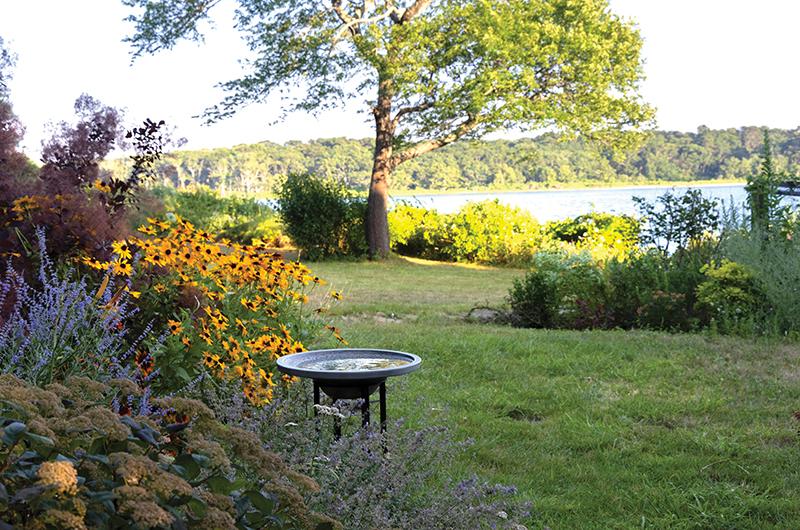
To preserve balance in her own yard, Hobart has kept a few holdovers from the property’s previous owner, mainly a bed of daylilies, which double as a snack and a place of rest for neighboring deer. (She noticed one morning that the beds were constantly flattened, the blooms picked clean.) It’s a concession she’s happy to make in exchange for peace in the rest of her garden, which now gives the illusion of a lush, wild meadow – a meadow free of unwanted frolickers, that is.
“I’ve kind of let it get overgrown, a little crowded,” Hobart said. “I don’t do a lot of maintenance. I just let it go.”
While Hobart has found a low-maintenance, naturalistic plan that works for her, she’s aware that there’s no one way to solve a four-hoofed problem. As if to prove that point, in early summer she gathered fellow garden club members Joan Cavazuti, Sarah Lolley, and Donna Arold at her home to share their own defenses in the never-ending battle. Some had taken Hobart’s approach and incorporated deer-resistant plants; others were determined to grow their favorite non-resistant flowers, even if it took a labor of love.
As one might expect from a group of individuals who typically approach their gardens with both artistic creativity and scientific reason, they had tried almost every method. Each knew the sinking feeling of waking up to signs of an intrusion. “I’ve had them take the heads off of my roses,” said Arold, the garden club’s communications vice president and programs chair. “A couple of years ago, I came out one morning, and the roses were all budded up and flowering and they looked lovely. The next morning, I’m having coffee, I come out on the porch, and they’re completely gone.
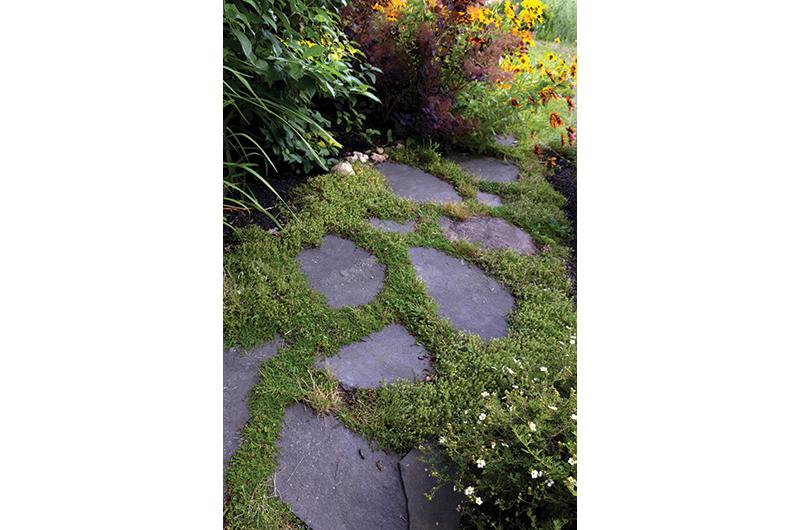
“That was when I first moved here, about [four] years ago,” she continued. “I had come from New Jersey, where deer are a big problem, but I didn’t think deer could get on an island.”
A meticulous gardener, Arold has no trouble remembering to regularly spray her garden with repellent and said her method has the added benefit of repelling rabbits too. She uses a natural deer spray on the perimeter of her yard, but is quick to add that the formula makes a difference. “The downside to the one I was using was that it stunk like rotten eggs,” she said. “You’d have to shower after,” Lolley echoed knowingly.
Arold has since switched to a peppermint-based spray, which she buys at her local nursery. Homemade versions pop up all over the internet, most of which consist of some combination of liquid dish detergent, water, and hot sauce. It turns out, deer aren’t a fan of spicy food.
“I’ve even heard of someone using Irish Spring soap,” Arold said. She had also been told that voles can be deterred by placing Juicy Fruit gum around the garden; the voles eat the gum instead of the plants, eventually blocking up their digestive tracts. She wasn’t sure if the same technique would work for deer, she said; maybe someone would be willing to try it.
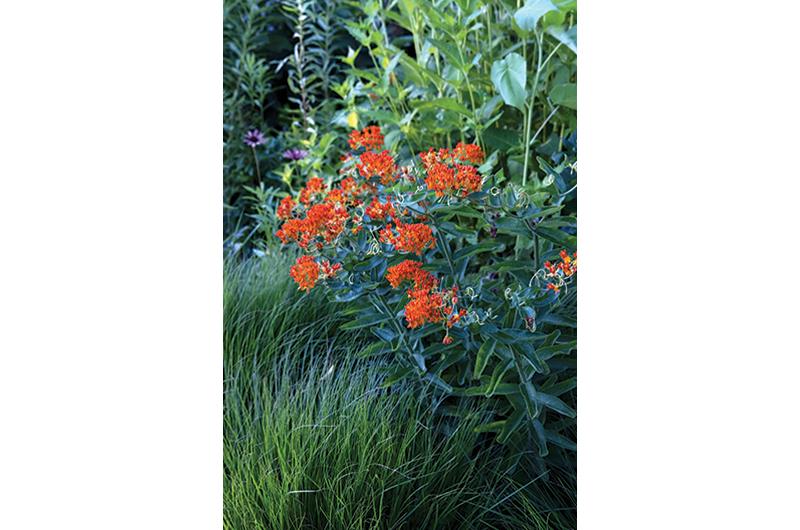
Despite the variety of techniques recommended and employed, Arold and her cohorts admit these methods are hardly foolproof – especially if you are serving up a deer’s favorite meal on a silver platter. “It’s all about the hunger factor,” she said. “And pink, luscious roses – they’re like cookies. I mean, who doesn’t want to eat cookies?”
The problem becomes even more complicated in the winter, when food is scarce. “When deer densities are high and food stocks are low, the list of plants deer won’t eat is nearly zero,” said Luanne Johnson, executive director of the Vineyard nonprofit BiodiversityWorks. “Until the Island reduces deer density, the type of plants people plant isn’t going to matter.”
In that case, the only almost-foolproof deterrent is a fence. Several garden club members have installed barricades so they can plant what they please with minimal heartbreak. Nancy Weaver keeps her rose collection behind a sky-high enclosure, while Cavazuti puts up a six-foot-tall fence around her shrubs in the winter, when deer are at their hungriest.
The initial cost of fencing can be daunting, but devoted gardeners say it can be worth it in the long run, providing invaluable peace of mind. To effectively deter deer, wire or mesh fences must be at least eight feet tall, the maximum height a deer can jump. Wooden privacy fences can be built with six feet clearance, since deer are less likely to jump into an area they can’t see into first. Experts recommend not leaving a gap between the fence and the ground to keep deer or smaller creatures from pushing their way in.
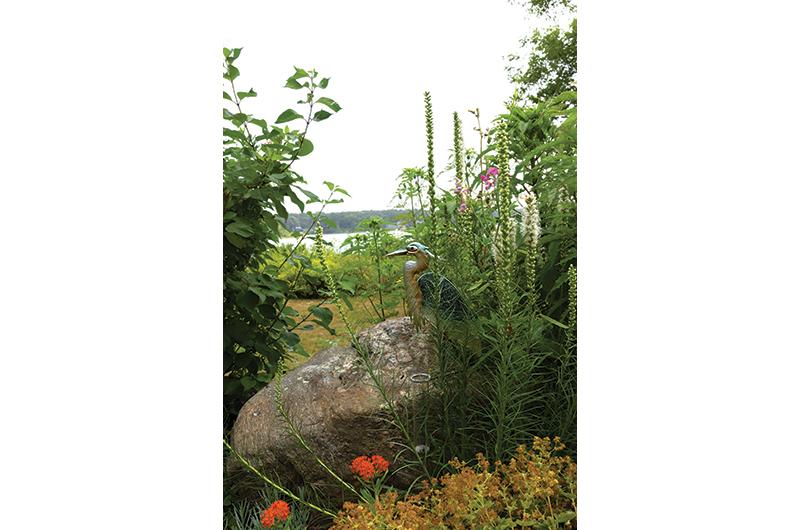
Although Hobart has opted not to fence off her view of Sengekontacket Pond, she has made one compromise with her husband, David, who is also an avid gardener. In the corner of the property, guarded on all sides by a wireframe cage, sits a vegetable garden – a tempting snack to a passing deer, rabbit, or vole. David tends to the vegetable garden and its safekeeping himself, Hobart clarified. They started, naively, with raised beds, which turned into a wooden cage frame, which became fortified by chicken wire.
“David is much more scientific about these kinds of things than I am,” Hobart said, which is why she leaves him to his own ambitions. Still, it’s hard to deny the effectiveness of a fence in some situations. Last year, Hobart planted cauliflower outside the vegetable garden, believing that the texture of the plant would be unappealing to deer. She was wrong.
“I think they liked them because they’re so young and tender when they’re just coming up,” she explained.
She could have been describing a newborn puppy from the softness and wistfulness of her voice. Several garden club members commiserated, noting that spring has taken on a bittersweet edge with the ever-present threat of deer eating their defenseless sprouts.
“That’s the most heartbreaking time for gardeners,” Hobart said. “Because you’ve waited all winter for your garden and then suddenly…”
She didn’t complete her sentence. The rest was sleeping in her daylily beds.
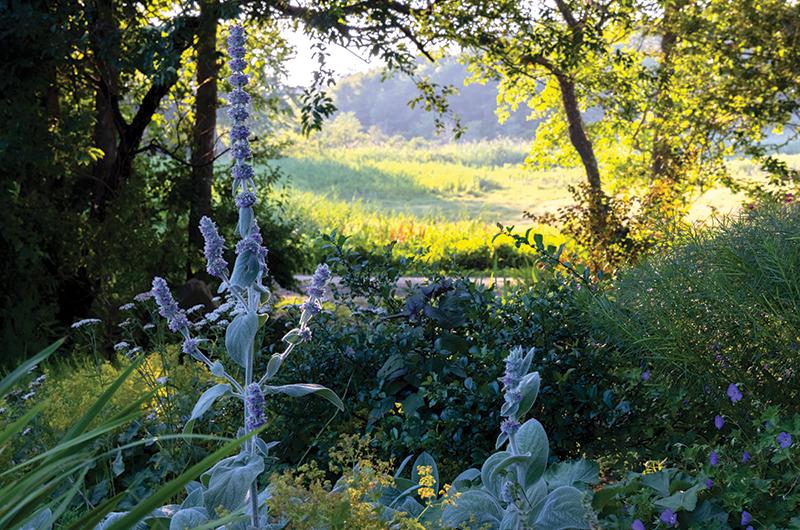

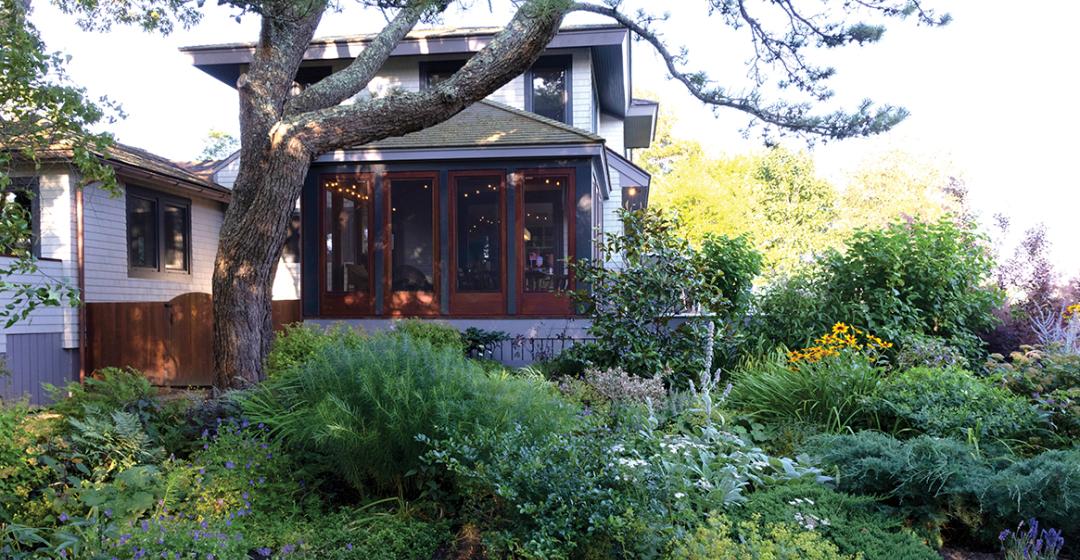


 3 comments
3 comments
Comments (3)